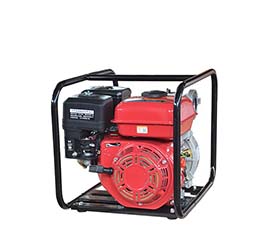Like a gasoline engine, a diesel engine undergoes four processes of intake, compression, work, and exhaust per work cycle. However, since the viscosity of diesel is larger than that of gasoline, it is not easy to evaporate, but the self-ignition temperature is lower than that of gasoline. Therefore, the formation and combustion of the combustible mixture of the diesel engine are different from that of the gasoline engine. The diesel engine sucks in the intake stroke pure air. When the compression stroke is nearing the end, the diesel oil is raised to 10 MPa or more by the fuel injection pump, and the cylinder is sprayed by the injector in a mist, after a short time and after compression.
The high-temperature air mixes to form a combustible mixture. Therefore, the combustible mixture of the diesel engine is formed inside the cylinder. Because the compression ratio of the diesel engine is high, the air pressure in the cylinder can reach 3.5 to 4.5 MPa at the end of compression, and the temperature is as high as 750 to 1000 K, which greatly exceeds the auto-ignition temperature of the diesel. Therefore, after the diesel is sprayed, the cylinder is self-ignited in a short time. When the fire burns, the gas pressure rises sharply to 6~9MPa, and the temperature rises to 2000~2500Ko. Under the push of high-pressure gas, the piston moves downward and drives the crankshaft to rotate.

Exhaust gas is also exhausted through the exhaust valve, exhaust pipe, etc. It can be seen from the above that in a four-stroke gasoline engine or a diesel engine, only one stroke is in one working cycle, and the other three strokes are auxiliary strokes that create conditions for the power stroke. Therefore, the single-cylinder engine does not work smoothly. Modern cars use multi-cylinder engines. In multi-cylinder engines, the work strokes of all cylinders are not performed at the same time, and there is a uniform work interval as much as possible. For example, in a six-cylinder engine, in a working cycle, the crankshaft rotates for two weeks, that is, 720 degrees and the crank angle has a cylinder working every 120 degrees. Therefore, the crankshaft of the multi-cylinder engine runs evenly, works smoothly, and can obtain sufficient power.
The basic structure of the two-stroke diesel engine is the same as that of the four-stroke diesel engine. The main difference is in the valve train. The two-stroke diesel engine does not have an intake valve, and some do not have an exhaust valve. Instead, a scavenging port and an exhaust port are provided in the lower part of the cylinder; or a scavenging port and an exhaust valve mechanism are provided. A scavenging pump driven by the moving parts and a scavenging box for storing the pressurized air are specially provided, and the gas distribution is completed by the cooperation of the piston and the gas port, thereby simplifying the structure of the diesel engine.